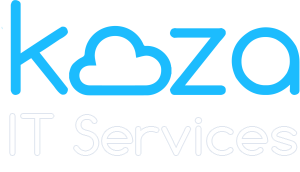Virtual CISO Services (vCIO / vCISO)
Empower your business with executive-level technology leadership — without the full-time cost.
Ken Akin Hoca offer Virtual CIO, CISO, and CTO services to help you drive innovation, enhance cybersecurity, and align technology with your business goals. Whether you’re scaling, modernizing, or simply need expert guidance, Koza brings the strategy, structure, and security your organization needs.

Why a Fractional CIO?
Ken Hoca’s Fractional CIO service is designed for businesses of all sizes. Available on-demand, his support can be delivered incrementally or as a long-term engagement. With extensive experience in emerging technologies, Ken can collaborate with your team, expand your leadership capacity, or help keep your IT operations running smoothly.
5 Signs Your Business Needs a Fractional CIO
- Lacking a clear IT strategy aligned with your business goals
- Experiencing cybersecurity challenges
- Struggling to keep up with the rapid pace of technological change
- Need help with digital transformation initiatives
- Not seeing the desired ROI in your IT investment
Ken’s Fractional CIOs bring deep technical expertise and a fresh perspective that can transform your IT strategy and help you achieve your business goals faster. Here’s what you can expect:
- Strategic IT Leadership: We help position IT as a true enabler of business growth, driving innovation and aligning technology with your long-term goals.
- Operational Efficiency: Unlock cost savings by optimizing your existing infrastructure and processes, ensuring your IT operations are efficient and effective.
- Cybersecurity Strength: In today’s digital age, safeguarding your company’s assets is crucial. Our CIOs ensure your business is fortified against cyber threats and has the proper risk management strategies in place.
- Mentorship for Your IT Team: Our fractional CIOs mentor and develop your internal IT staff, providing the leadership and guidance they need to grow and succeed.
Expert Leadership
Our Fractional CIOs bring decades of experience working with industry-leading companies. Ken take a business-focused approach, understanding your unique challenges and aligning technology solutions with your strategic goals.
Comprehensive Services
Ken provides a comprehensive range of services, including IT strategy development, cloud migration planning, cybersecurity assessments, IT budgeting and resource allocation, vendor management, and more.
Flexible Solutions
Ken offers flexible engagement models to meet your specific needs and budget, whether you require ongoing guidance or support for a specific project.
Service: Provides executive-level IT strategy, budgeting, and technology roadmaps for SMBs that lack an in-house CIO.
- Implementation:
- Align IT investments with business goals.
- Conduct quarterly reviews, risk assessments, and cost optimization.
- Vendor management and procurement oversight.
- Tools/Technologies:
- IT governance frameworks (COBIT, ITIL).
- Financial planning tools (QuickBooks, BrightGauge).
- Project management (Asana, Trello).
Virtual Chief Information Security Officer (vCISO) – Cybersecurity Leadership
Service: Delivers enterprise-grade security strategy, compliance, and risk management for businesses without a dedicated CISO.
- Implementation:
- Develop and enforce security policies (GDPR, HIPAA, NIST).
- Oversee incident response planning and regulatory audits.
- Conduct security awareness training for executives.
- Tools/Technologies:
- Compliance platforms (Drata, Vanta).
- SIEM tools (Splunk, AlienVault).
- Risk assessment tools (Qualys, Rapid7).
Virtual Chief Technology Officer (vCTO) – Innovation & Digital Transformation
Service: Provides executive-level IT strategy, budgeting, and technology roadmaps for SMBs that lack an in-house CIO.
- Implementation:
- Align IT investments with business goals.
- Conduct quarterly reviews, risk assessments, and cost optimization.
- Vendor management and procurement oversight.
- Tools/Technologies:
- IT governance frameworks (COBIT, ITIL).
- Financial planning tools (QuickBooks, BrightGauge).
- Project management (Asana, Trello).
Compliance & Governance Advisory
Service: Ensures adherence to industry regulations (PCI-DSS, SOC 2, ISO 27001) through policy development and audits.
- Implementation:
- Gap analysis and remediation planning.
- Employee training on compliance requirements.
- Tools/Technologies:
- GRC platforms (LogicGate, OneTrust).
- Audit management tools (AuditBoard).
Technology Budgeting & Cost Optimization
Service: Identifies cost-saving opportunities in IT infrastructure, software licensing, and cloud spend.
- Implementation:
- Analyze current IT expenditures.
- Recommend scalable, cost-efficient solutions.
- Tools/Technologies:
- Cloud cost management (AWS Cost Explorer, CloudHealth).
- IT asset management (Lansweeper, ServiceNow).
Board-Level Reporting & Risk Communication
Service: Provides executive-level IT strategy, budgeting, and technology roadmaps for SMBs that lack an in-house CIO.
- Implementation:
- Align IT investments with business goals.
- Conduct quarterly reviews, risk assessments, and cost optimization.
- Vendor management and procurement oversight.
- Tools/Technologies:
- IT governance frameworks (COBIT, ITIL).
- Financial planning tools (QuickBooks, BrightGauge).
- Project management (Asana, Trello).
Vendor & Contract Management
Service: Manages relationships with MSPs, cloud providers, and cybersecurity vendors.
- Implementation:
- Negotiate SLAs and contracts.
- Oversee third-party risk assessments.
- Tools/Technologies:
- Vendor risk platforms (BitSight, SecurityScorecard).
Incident Response Leadership (On-Demand)
Service: Acts as the executive lead during cyber incidents, ensuring compliance with legal/regulatory requirements.
- Implementation:
- Coordinate breach response and communication.
- Post-incident reviews and improvements.
- Tools/Technologies:
- Incident management (PagerDuty, IBM Resilient).
Why Choose Koza’s Virtual Executive Services?
✅ Cost-Effective: Fraction of the cost of a full-time executive.
✅ Strategic Focus: Aligns technology with business growth.
✅ Risk Reduction: Proactive security and compliance oversight.
✅ Flexible Engagement: Scalable from advisory to hands-on leadership.
